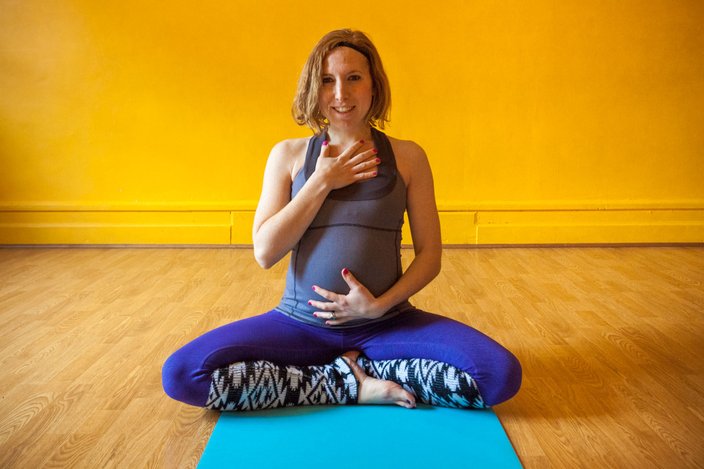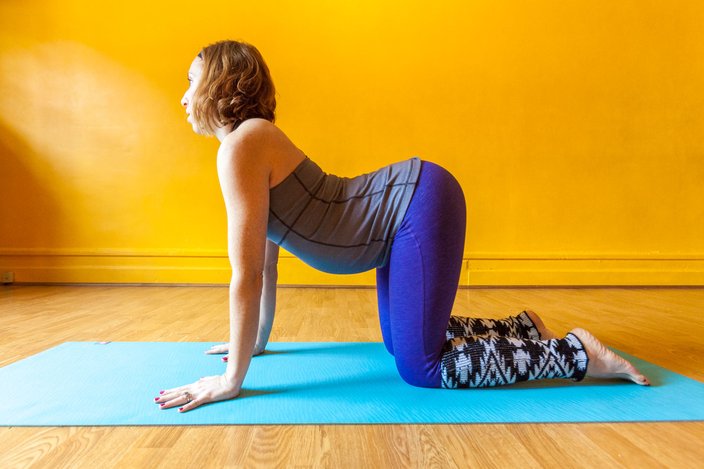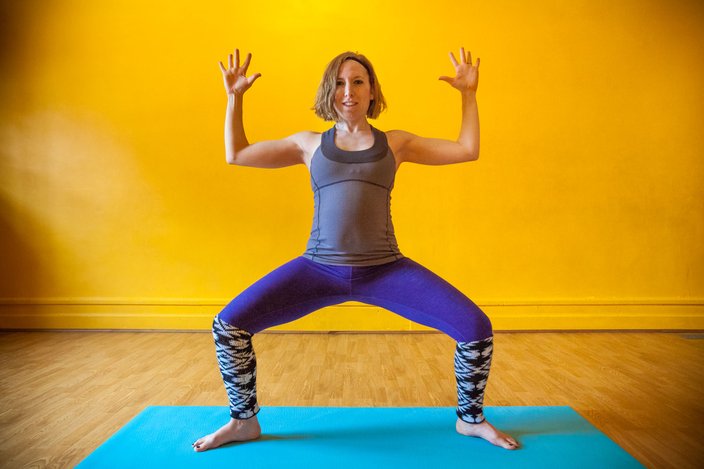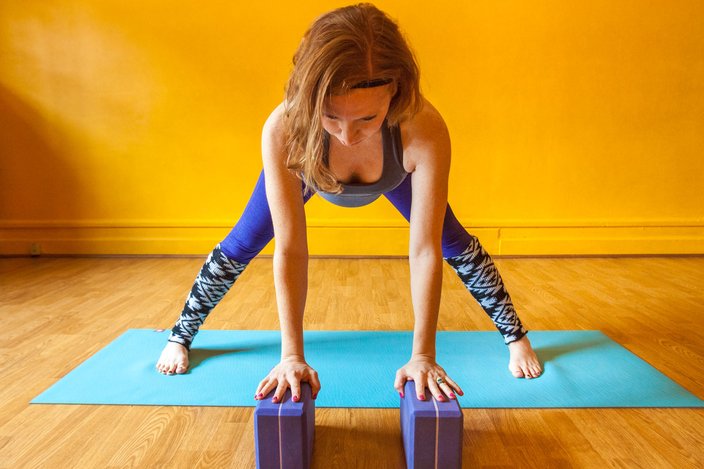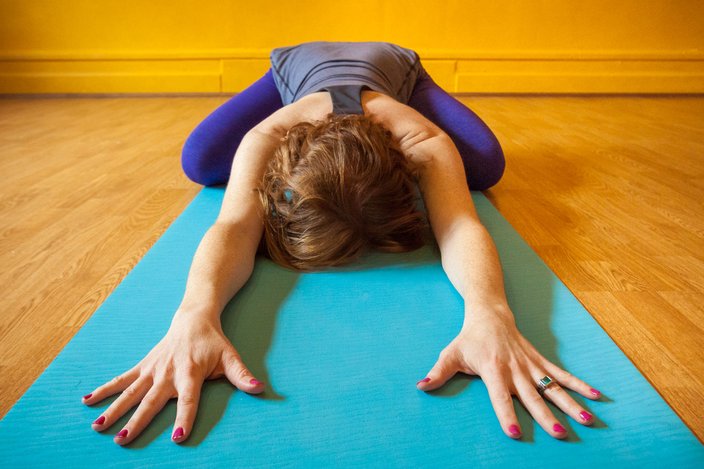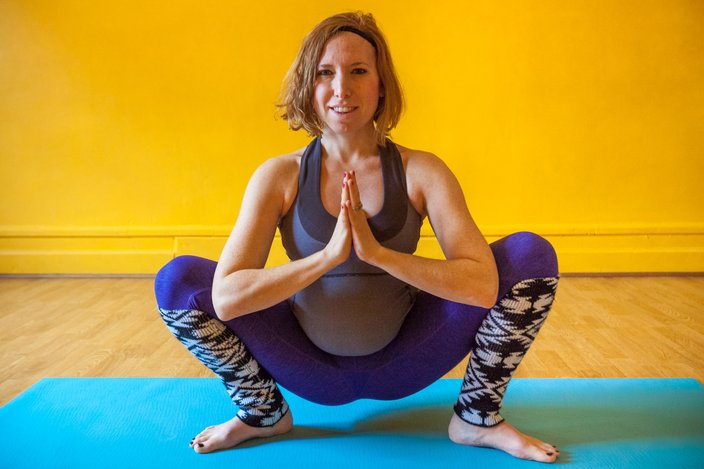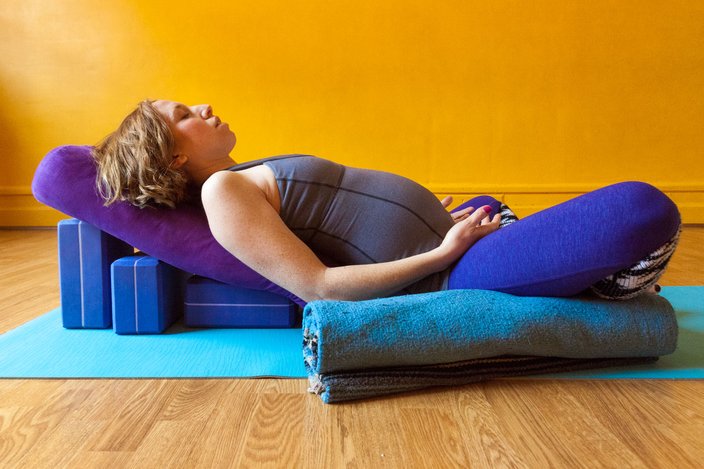
February 02, 2015
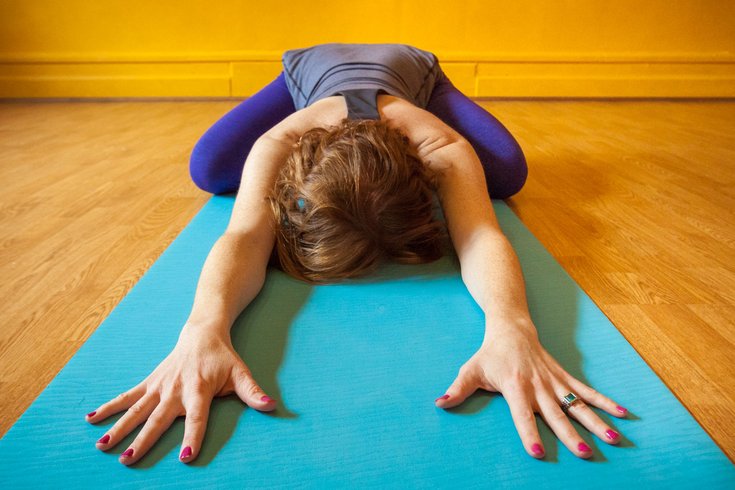 Thom Carroll/PhillyVoice
Thom Carroll/PhillyVoice
Kate DeRosa, teacher of Prenatal Yoga at Wake Up Yoga South, in Child's Pose.
Dear Amy,
I am 33 weeks pregnant. My midwife recently suggested that I take up a prenatal yoga practice as I enter into the last few weeks of my pregnancy. She said it really would help me prepare for birth. The thing is, I’ve never practiced yoga before. Well, I did take one class at my gym, but that was ages ago.
I am in good physical shape and my pregnancy has been complication free. But isn’t it too late for me to begin practicing prenatal yoga? Also, how can such a practice prepare me for birth? I admit I’m pretty anxious when I think about the journey ahead. Any thoughts you can share on these points are appreciated.
Kate, a mother-to-be in Philadelphia
Dear Kate,
Thank you for taking the time to write to me about this important topic. I taught prenatal yoga for six years before becoming a mother and I drew upon my yoga practice throughout my own pregnancy and the birth of my son. I continue to teach prenatal yoga now. Based upon my experience, I can unequivocally state that your midwife is right. Prenatal yoga is a fantastic way to prepare for birth – and stay calm, centered and healthy through every stage of pregnancy.
In my training, I was taught that “it is never too early or too late” to begin a prenatal yoga practice. As long as mother-baby are healthy, the movement, breath awareness, and meditation associated with a quality prenatal yoga class contribute very positively to a mother and baby’s overall well-being. It also significantly helps a mother prepare for birth. But don’t take my word for it alone.
Earlier this year, researchers in the UK published the first worldwide report regarding the impact of prenatal yoga on reducing maternal anxiety and depression. Their findings were published in April 2014 in the journal “Depression and Anxiety.” Dr. James Newham, who conducted the research states, “It is surprising this has never been looked at before, we have long believed that it works but no research had been done to back up the theory. We have now gone some way to prove that it can help. It was not a small effect either.”
This matters. When a pregnant woman is stressed, when she has high levels of cortisol or adrenaline coursing through her body, this negatively affects her baby. The hormones of both stress and well-being significantly impact fetal development. For example, maternal stress during pregnancy increases the likelihood of premature birth, low birth weight, and an increased likelihood of emotional/behavior health problems for both mother and child -- even through the child’s adolescence. Basically, what the mother feels, the baby also feels.
Clearly, prenatal yoga reduces maternal anxiety and depression leading to healthier outcomes for both mother and child. Yet, UK researchers also found that prenatal yoga practice decreases the risk of cesarean delivery as well as a mother’s request for pain medication in labor.
It’s very normal, especially in our culture, to be anxious about childbirth. You are not alone here. For most American women today, the first birth they witness is their own. This stands in stark contrast to the practice of our ancestors. For countless generations, women have surrounded each other in birth. By witnessing the power, strength, vulnerability and intensity of birth, mothers-to-be could much more easily prepare for what was in store for them. Add to our lack of direct experience, a highly medicalized approach to the birth process, many women carry a great deal of anxiety with them into the labor room.
Prenatal yoga is a powerful anecdote offering healing to our collective anxiety surrounding birth. Through mindful movement, sounding, rocking and breathing, pregnant women can access a deep well of primal and physiological wisdom in their bodies as well as strength in their spirits. Such wisdom and strength make room for the acceptance and transformation of anxiety.
Prenatal yoga practice also supports a positive and affirming vision of the pregnant body. In her book, “Ina May’s Guide to Childbirth,” Ina May Gaskin, America’s most well-known midwife, offers the following advice to pregnant women: “Even if it has not been your habit throughout your life so far, I recommend that you learn to think positively about your body.” Prenatal yoga will support you in this endeavor.
In conclusion, it certainly isn’t too late for you to take advantage of all of the benefits proven to come with prenatal yoga practice. So many of my prenatal yoga students are new to yoga. A prenatal yoga class is gentle, calming and restorative. It’s a perfect place to be a beginner. In fact, many women begin their yoga practice in pregnancy.
I wish you the very best Kate. Thank you for reaching out to me. Below I highlight seven poses that are particularly beneficial in preparing for birth. Quality prenatal yoga classes will include most, if not all, of these poses.
May your new prenatal yoga practice help you cultivate courage, mindfulness and gentleness – qualities beneficial in birthing, mothering and living.
Peace,
Amy
Kate DeRosa, teacher of Prenatal Yoga at Wake Up Yoga South, in a Seated Meditation Pose. Thom Carroll/PhillyVoice.
Simply sitting comfortably, either on the floor or in a chair, while practicing mindful breathing is very restorative. Placing hands on the belly reminds a pregnant woman of the child growing within and puts her in direct connection with the wonders of pregnancy. Consider the beauty of two heartbeats in one body -- two bodies connected in ways never to be repeated in nature.
Numerous, peer-reviewed studies highlight the healing and healthy benefits of seated meditation practice. Again, what the mother feels, the baby feels. Whether or not a woman takes a prenatal yoga class, this simple technique of mindful breath meditation brings numerous benefits.
One of the best poses to bypass and alleviate back tension is cat-cow pose, sometimes called cat-dog pose. In fact, many women find this to be a very helpful position in labor and birth.
By coming to all fours, with knees positioned slightly wider than one’s hips, the back arches up accompanied by a deep inhalation. Think of a cat on Halloween. This cat position allows not only for both the back muscles to extend, but an expectant mother’s lungs to expand. Then, with an exhalation, the lower back gently turns up into a cow-dog tilt. This wave of movement begins in the lower back and ends with the head lifting to gaze forward. Adding an audible sigh to the exhale helps relieve both physical and emotional tension.
The pattern of cat-cow movement synchronized with inhalation and exhalation repeats. It is important to note that the hormone relaxin, which softens the cervix and relaxes ligaments in the pelvis, is quite active in the last trimester of pregnancy. Therefore, as pregnancy progresses, the cow-dog tilt should be practiced with care so as not to overextend the lower back. The mantra guiding all prenatal yoga practice is “listen to your body and trust your comfort.”
Few other poses help a woman cultivate the focus and courage needed for birth. With bent knees, wide legs, arms lifted, and heart/belly open, goddess pose cultivates a great deal of strength in the body. By making an audible “Ahhh...” as the breath leaves the body and rocking with the intensity of the pose, women practice what it is like to mindfully move with contractions.
It’s easy to tighten the body in response to pain and fear. In goddess pose, one can work with a challenging posture and practice keeping the throat, face and mind calm. As Dr. William Sears and Martha Sears RN write, “Muscles send messages to each other. Clenched fists, a tight mouth, a furrowed brow, all send signals to the birth-passage muscles, the very ones that need to be loosened. Opening up to relax these upper-body parts relaxes the lower ones.”
Kate DeRosa, teacher of Prenatal Yoga at Wake Up Yoga South, in Forward Fold pose. Thom Carroll/PhillyVoice.
Standing with legs wide apart, a forward fold begins at the waist. On an exhalation, the upper body folds toward the floor. Muscles in the back and neck release. The spine extends and the backs of the legs receive a wonderful stretch. One caveat: Because blood pressure lowers in pregnancy and blood supply increases, pregnant women can feel dizzy when practicing forward folds. In the second and third trimesters, expectant mothers can modify forward fold poses by placing their hands on blocks or on a nearby chair. Modifications help mothers-to-be enjoy the benefits of these poses safely.
With wide knees, forehead to earth, and back extended, resting in child’s pose enables a woman to release lower back pain, connect to the grounding energy of a forward fold and surrender. This is a deeply restorative and meditative pose. As a doula, I’ve seen many women use this pose to rest between contractions in labor, even in a hospital bed.
Kate DeRosa, teacher of Prenatal Yoga at Wake Up Yoga South, in Squat Pose. Thom Carroll/PhillyVoice.
Taking a wide stance, bending the knees and rocking side-to-side in squat pose is extremely beneficial as one prepares for birth. Squats open the pelvis, bring attention to the pelvic floor muscles, strengthen the legs, and allow a woman to intuitively and gently rock back and forth as she envisions a healthy vaginal delivery. As a doula, I’ve seen many women deliver in this natural, gravity-friendly childbirth pose.
Traditionally, one rests flat on the back in a supine position in relaxation pose. However, as the uterus grows, it's important that a mother-to-be rests while side lying or in a supported supine position. In relaxation pose, calm washes over the body, mind, and spirit. Placing one hand on the belly reminds the pregnant woman of the profound love felt for the child growing inside. Relaxation pose offers pregnant women a chance to let go of all thoughts relating to the past or future. To simply rest in the present moment, with the each breath, and the unfolding miracle of pregnancy is enough.
